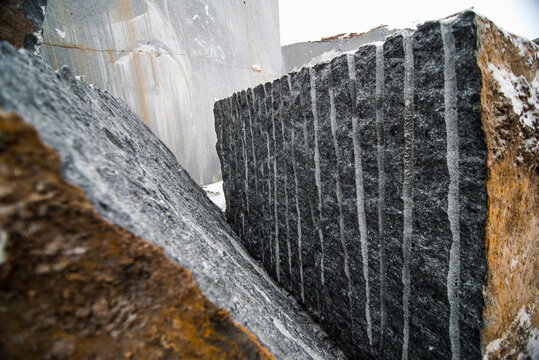The Surprise Gems: Discovering Granite Quarries in South Africa
The Surprise Gems: Discovering Granite Quarries in South Africa
Blog Article
Unveiling the Mysteries of Granite Quarrying: Where Strength and Sophistication Meet
The world of granite quarrying is a realm where the raw strength of nature merges with human creativity to produce structures that stand the test of time with an air of elegance. From the depths of quarries to the thorough polishing in workshops, the process of transforming granite right into building marvels is an intricate dance of custom and advancement. As we peer right into the midsts of this old craft, we start to discover the hidden details that form the very essence of our built setting.
The Beginnings of Granite Quarrying
In the record of building background, the origins of granite quarrying are shrouded in a tapestry of old workmanship and geological wonders. Going back to ancient Egypt and Mesopotamia, the extraction of granite from quarries marked the start of a journey that would eventually cause the creation of some of the globe's most iconic frameworks.
Granite quarrying's roots can be traced to the experienced craftsmens that identified the rock's resilience and aesthetic charm. Through a combination of primitive tools and sheer determination, these early quarry employees uncovered granite blocks that would certainly come to be the foundation of civilizations.
As people developed, so did the techniques of quarrying granite. The Romans, renowned for their design expertise, established innovative methods for drawing out granite to build monoliths, temples, and roads that stood the examination of time.
The tradition of these ancient quarrying practices proceeds to shape modern-day style, with granite staying an icon of toughness and style in construction projects around the world. (granite quarries in south africa)
Tools of the Quarrying Trade
The development of granite quarrying methods from old human beings to contemporary times highlights the critical duty played by the tools of the quarrying sell shaping the sector's practices. In old times, quarrying tools were simple, commonly including blades, hammers, and wedges made from materials like bronze or iron. These tools called for significant manpower and time to extract granite blocks from quarries.

In addition, the intro of pneumatic tools and high-powered equipment has substantially lowered the physical labor required in quarrying procedures, boosting employee safety and security and performance. As the quarrying sector continues to innovate, the tools of the profession remain at the leading edge of driving development and forming the future of granite removal.
Removing Blocks of Granite
Making use of accuracy equipment and advanced strategies, the removal of granite obstructs from quarries has actually come to be an innovative procedure in the modern-day quarrying market. Regulated blasting strategies are after that utilized to break apart the granite right into manageable areas.

Polishing and Ending Up Strategies
To accomplish a flawless surface area on granite blocks, knowledgeable artisans utilize a series of careful polishing and finishing techniques. After the Go Here preliminary extraction and shaping procedures, the granite blocks undergo a complete sprucing up stage to improve their natural elegance and durability. One usual approach used in polishing granite is ruby abrasion, where industrial diamonds are utilized to grind and brighten the stone to a smooth finish. This process not only produces a lustrous surface yet also guarantees harmony in shade and appearance across the granite block.
Along with sprucing up, finishing strategies are applied to more improve the granite's appearance. These methods might consist of flaming, sharpening, or cleaning, each offering special structures and surfaces to fit different visual preferences. Flaming, as an example, includes revealing the granite surface to high temperatures to develop a rough, distinctive surface, perfect for outside applications where slip-resistance is necessary. Sharpening, on the various other hand, provides a matte surface that is smooth to the touch, best for informative post interior counter tops and flooring. By meticulously picking and using these polishing and ending up strategies, artisans can change raw granite obstructs right into splendid items that showcase both strength and elegance.

Ecological Influence and Sustainability
With the growing focus on environmental consciousness in the industry, granite quarrying techniques are progressively looked at for their impact on all-natural sources and long-term sustainability. find more Quarrying for granite can have substantial environmental ramifications. The extraction procedure commonly involves the usage of heavy machinery, dynamites, and huge quantities of water, bring about habitat devastation, soil disintegration, and water air pollution. Furthermore, the transport of granite from quarries to processing centers produces carbon discharges, better adding to ecological destruction. granite quarries in south africa.
To mitigate these effects and guarantee sustainability in granite quarrying, industry stakeholders are taking on numerous steps. Executing advanced innovations to lower energy intake and water usage, reclaiming quarried land for eco-friendly remediation, and advertising responsible sourcing techniques are some approaches being employed. Additionally, qualifications such as the Woodland Stewardship Council (FSC) and the Leadership in Energy and Environmental Design (LEED) aid consumers recognize eco friendly granite products.
Verdict
Finally, granite quarrying is a process that needs specialized tools and techniques to extract blocks of granite and brighten them to a high degree of coating. While the environmental influence of quarrying can be considerable, initiatives are being made to boost sustainability practices in the sector. In general, granite quarrying is a delicate equilibrium in between utilizing the stamina and style of this all-natural stone while lessening its effect on the setting.
Report this page